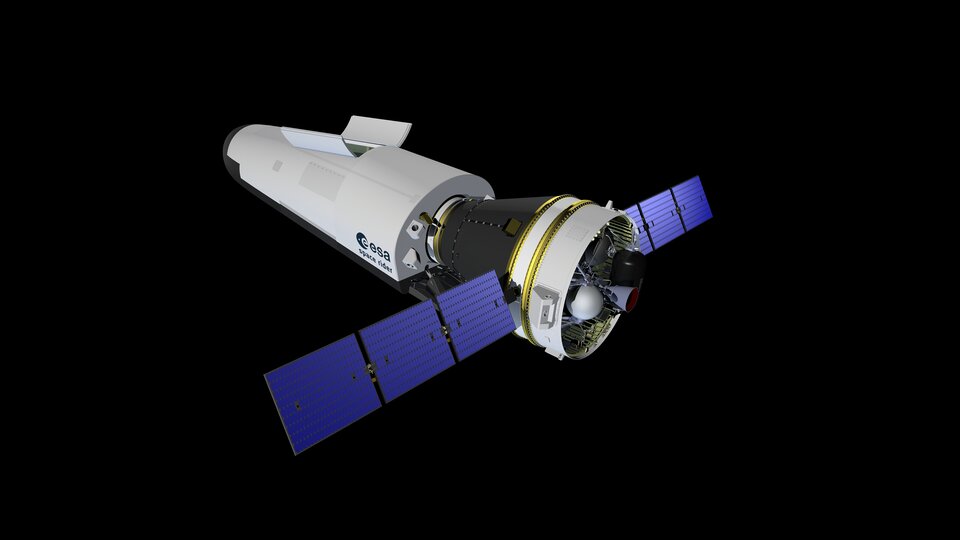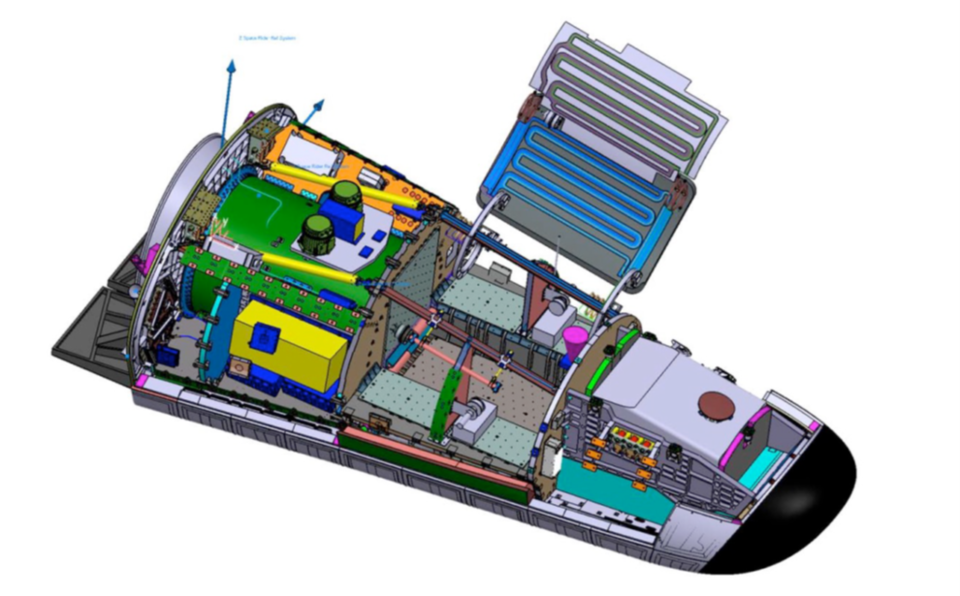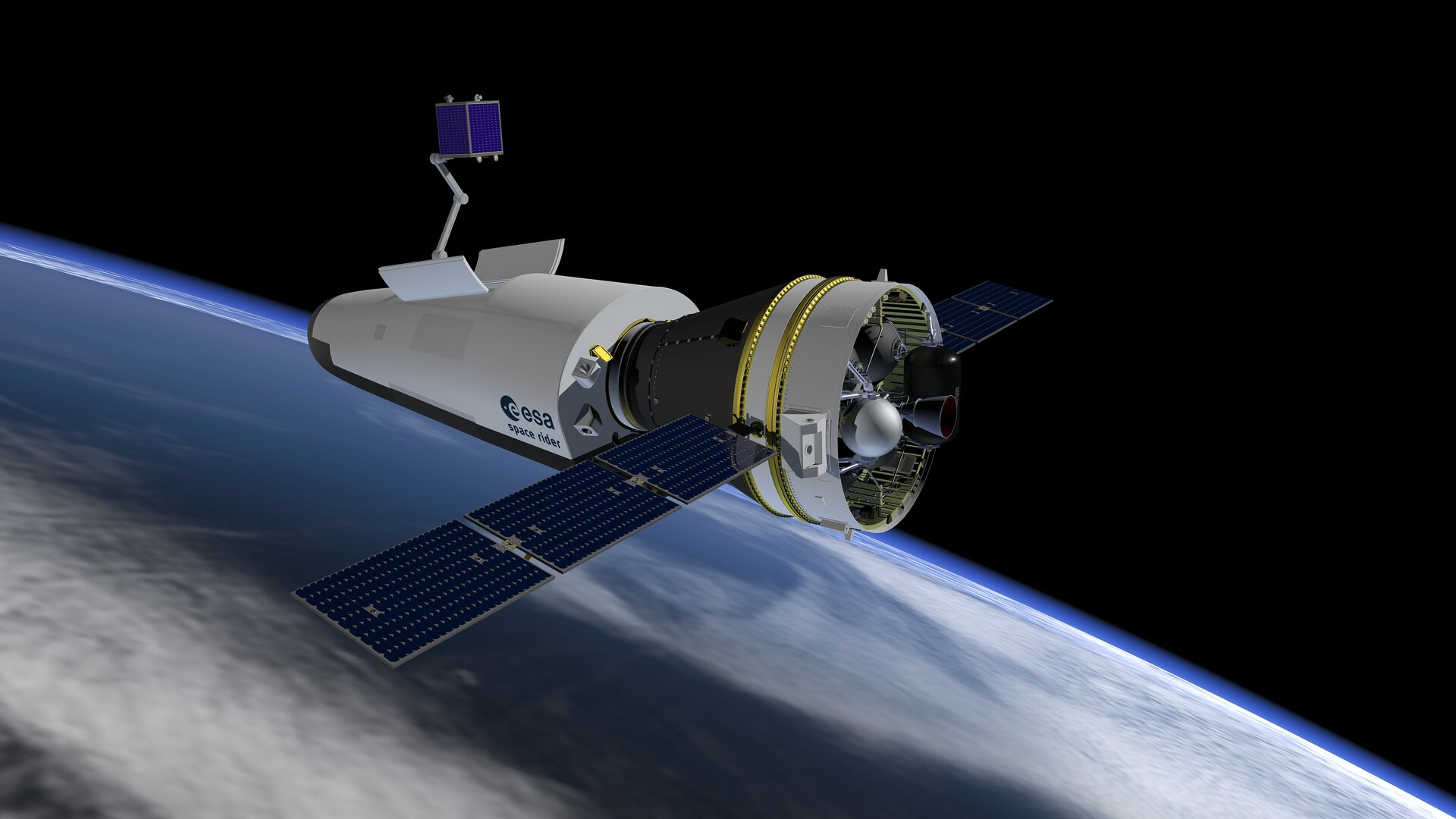Space Rider
In brief
The ESA Academy Experiments programme gives Master and PhD students the opportunity to fly a scientific experiment or technology demonstrator in orbital conditions onboard Space Rider. Mission possibilities include scientific applications in microgravity and in-orbit telecommunication, robotic exploration and Earth observation validation/demonstration experiments. Successful applicants are given the opportunity to design, build and operate a fully autonomous experiment that will stay launch with the Vega-C and stay onboard Space Rider for a period lasting up to 2 months.
In-depth

What is the Space Rider re-usable free flyer platform?
Space Rider is an uncrewed high-tech robotic space laboratory. Up to 600 kg of payloads can fit inside the environmentally controlled cargo bay that offers 1200 litres of payload volume and provides services including 600 watts of power along with thermal control, data-handling, and telemetry capability. Offering an array of orbit altitudes and inclinations, Space Rider will enable a large variety of experiments in microgravity, open opportunities for educational missions, and help prove technologies for Earth observation, telecommunication, robotic exploration as well as research in pharmaceutics, biomedicine, biology, physical sciences and in-space manufacturing technology development. After launch from Europe’s space port in Kourou (French Guiana) on Vega-C it will stay in low orbit for two months. At the end of its mission, Space Rider will then re-enter the Earth's atmosphere and land for the recovery of the users’ payloads.
Enjoy the video below to discover all the platforms! For the Space Rider chapter go to minute 1:16:02.

The Academy Experiments Programme provides students teams with the unique opportunity to place an experiment of their own design, on-board Space Rider.
The platform offers:
- very late access to the payload bay for biological payloads
- extended exposure (up to two months and more) to low Earth orbit (LEO) space environments;
- openable cargo-bay with field of view to Earth or Deep Space, and fine pointing capability;
- high quality microgravity environment reaching levels down to 10-6 g;
- available standard platform in-flight services (i.e. power, telemetry, tele-command, thermal control, attitude control) as well as on-ground services (i.e. telemetry stations, in-orbit control centre, users stations for interactive in-flight operations) enabling teams of students to focus the majority of their efforts on their experiment payload;
- post-flight retrieval of payload, including early access for biological payloads;
Teams selected to participate in the programme are guided and supported by ESA experts from the Space Transportation Directorate and members of the European Low Gravity Research Association (ELGRA) as they navigate through all stages of the project, from the initial stages of design through to the operation and data collection phases of their experiment.

Programme and technical constraints
While defining their projects, applicants should keep in mind the following constraints that apply to the experiments (amongst others) and student teams:
- The amount of documentation and reviews necessary for each phase of the programme is significant. Multiple project and safety milestones must be passed for the project to continue to the flight campaign.
- The size of the experiment for the ESA Academy initiative is limited to a small cubesat format (e.g., 1U, 2U)
- Safety precautions are extremely stringent and experiment simplicity will receive high priority during the selection process.
- Hardware must go through vibration, vacuum, EMC and audible noise tests.
- The specific orbit and in-orbit time is mission dependent.
Platform specific documentation and further reading
More detailed information about Space Rider can be found here.
All information on the requirements and engineering conditions can be found in the Space Rider User Guide.
Further information on Space Rider operations can be found here.
Please note that the conditions detailed above are subject to change without prior notice.


